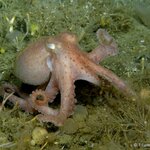Ecology & Zoology

A generation ago, environmental activists declared war on yet another field of science - astronomy. A new telescope was going to disrupt a squirrel, they alleged, and so astronomy abandoned places in the U.S. like Arizona and began to move to Chile.
Environmentalists declared a victory against science but they don't understand systems, including ecological ones. Astronomy is a clean industry with people from all over the world and to keep it going means limiting light pollution - and another study has shown that light pollution is an unknown force.
Artificial night time light from…

It is no surprise that female mice prefer healthy males, most humans are the same way, but a new study tested the belief that attractive males have better mating success than other males.
Sarah Zala and Dustin Penn of the Konrad Lorenz Institute of Ethology at the Vetmeduni Vienna investigated whether females would also choose to mate with healthy over infected male if given a choice. In the laboratory and in large enclosures, the females were allowed to freely choose between two males, one healthy and another challenged with a mild infection, which they previously found to alter…

The Antarctic Ocean hosts rich and diverse fauna despite inhospitable temperatures close to freezing. While it can be hard to deliver oxygen to tissues in the cold due to lower oxygen diffusion and increased blood viscosity, ice-cold waters already contain large amounts of dissolved oxygen.
That is why an Antarctic octopus that lives in ice-cold water has evolved specialized blood pigments (e.g. hemoglobin), and why that blue-blooded
benefit could help to make it more resilient to climate change than Antarctic fish and other species of octopus. Octopods have three hearts and…

Many mammals, and some birds, escape the winter by hibernating for three to nine months. This period of dormancy permits species which would otherwise perish from the cold and scarce food to survive to see another spring.
The Middle East, with temperate winters, was until recently considered an unlikely host for hibernating mammals.
A new paper shows it is happening and that is not the only odd thing - the researchers show that two species of the mouse-tailed bat (Rhinopoma microphyllum and R. Cystops) are hibernating at the unusually warm and constant temperature of 68°F in caves in…

Attempts to put a dollar value on the natural world – so-called “natural capital” or “ecosystem services” – have produced some frankly staggering numbers. A seminal 1997 paper valued the world’s ecosystem services at US$33 trillion (A$42 trillion) a year. This estimate was controversial, given that it dwarfed the entire global market economy, which at the time stood at roughly US$18 trillion a year.
An updated estimate published last year suggested that a better annual global estimate of the value of ecosystem services would have been even higher – a massive US$145 trillion in 1997.…

When a young, wingless praying mantis jumps, from take-off to landing is a mere tenth of second--literally faster than the blink of a human eye. During a jump, the insect's body rotates in mid-air at a rate of about 2.5 times per second.
And yet, the jumps are precise.
When mantises jump, they land on target every time.
"This is akin to asking an ice skater who is rotating at the same speed as these mantises to stop suddenly and accurately to face a specific direction," says Malcolm Burrows of the University of Cambridge.
A jump by a male 6th instar mantis captured at 1000…

Male enigma moth, a new species discovered on Kangaroo Island. George Gibbs, Author provided
The discovery of a new family of moth is one of the most exciting finds in entomology in the past 40 years.
It was found not in some remote and unexplored region of Australia, but right in our backyard on Kangaroo Island in South Australia. The island that is only 100 kilometers from Adelaide and 13
kilometers
from the mainland, that has been settled since 1836 and is one of the loveliest destinations for a holiday.
This family of moths (Aenigmatineidae) contains a single genus (Aenigmatinea)…

Megaloprepus caerulatus. Credit: Andres Hernandez, STRI
By Jyoti Madhusoodanan, Inside Science
(Inside Science) -- In late April, rain begins to pool in the hollows of trees on Barro Colorado Island in Panama. The water-filled tree holes may seem insignificant, but they're prime real estate – and the sites of intense battles – to giant damselflies (Megaloprepus caerulatus) seeking mates.
Male damselflies find their puddles early in the season and guard them from other males. Females travel until they identify the best of these tiny pools to lay their eggs, then mate with the male who "owns"…

Cats seem to use their eyes rather than follow their nose when it comes to finding the location of food, according to a new paper by animal behaviorists.
Felines have keen smell and vision, so a small study investigated which sense they prefer to use under test conditions – and suggests sight may be more important than smell.
A group of six cats were placed in a maze which had ‘decision’ points – and the cats had to choose which avenue they took based on their preference for using images or smell. They were simultaneously presented with two squares of paper, each containing a different visual…

The use of animals in experimental research has soared at US laboratories, according to People for the Ethical Treatment of Animals (PETA), and taxpayer-funded scientists are the culprits.
The 25 largest recipients of government funding increased animal experimentation 73 percent in 15 years, despite growing public opposition to the practice and mounting evidence that animal studies often do not faithfully translate to people, they write.
They also say the data contradict government claims of reduced animal use and are at odds with government policies designed to curb and replace the use of…